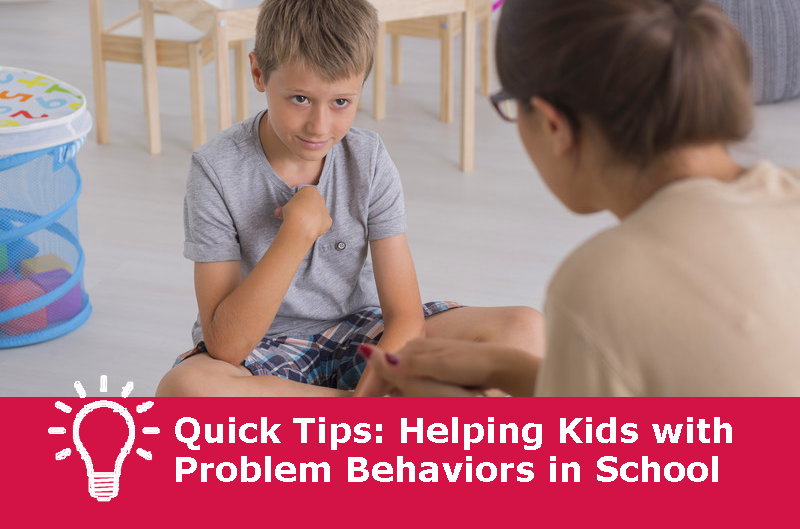Helping Kids with Problem Behaviors in School
The Carlat Psychiatry Blog, Volume , Number ,
https://www.thecarlatreport.com///
All behavior is a code that a child uses to communicate, says Jessica Minahan, a board-certified behavior analyst and special educator, who co-authored The Behavior Code Companion. “Bad behavior” is often cloaked anxiety, and we can support education professionals by offering ideas that help anxious children. In an Expert Q&A in The Carlat Child Psychiatry Report, Ms. Minahan described the following five skills, which you can help special education teachers use with kids who have problem behaviors: 1. Use strategies for self-regulation, self-calming 2. Help develop social skills 3. Focus on helping the child have positive, realistic thoughts 4. Encourage flexible thinking 5. Teach planning and organization skills Subscribers can read the full article in The Carlat Child Psychiatry Report, and learn more about breaking the behavior code.
As an example, children can use a vibrating timer that reminds them to ask themselves: “am I paying attention?” or “am I sitting in my seat?” Biofeedback games, some using a sensor on the child’s finger connected to a computer or tablet, help students choose coping strategies that work by showing a reduced heart rate. Teachers can also use non-verbal signals that remind students to check their behavior.
Talk about and model interaction skills, such as smiling, making eye contact, being empathic, listening to others, and taking turns. Your patients might not know how to react when other children hit them on the arm or an unfriendly kid approaches them on the playground. So, learning these skills can help children make friends, ease loneliness, and improve their self-esteem.
Create a daily check-in and check-out sheet, where the child writes or states what he or she is worried about that day, and what he or she feels is going to be difficult. Take a moment to help the child plan how to handle these situations, and let him or her know that you will check in at the end of the day to see what worked and what didn’t. An end of the day, a check-out sheet allows the child to celebrate success or think of new ideas to try.
When problems arise, talk with children about how to adapt to the situation, improvise, and shift strategies to meet diverse types of challenges. Teachers can also use riddles and jokes to help a child shift between word meanings. Changing the rules of a game can show a child there are other ways of doing things. Catching kids being flexible and reinforcing them is a wonderful way to see this skill increase (e.g., a “flexibility jar” can be filled with a pom-pom every time the child demonstrates flexibility).
Have kids use checklists and how-to lists, break long assignments into small chunks, and use visual calendars, time organizers, and mnemonics.


